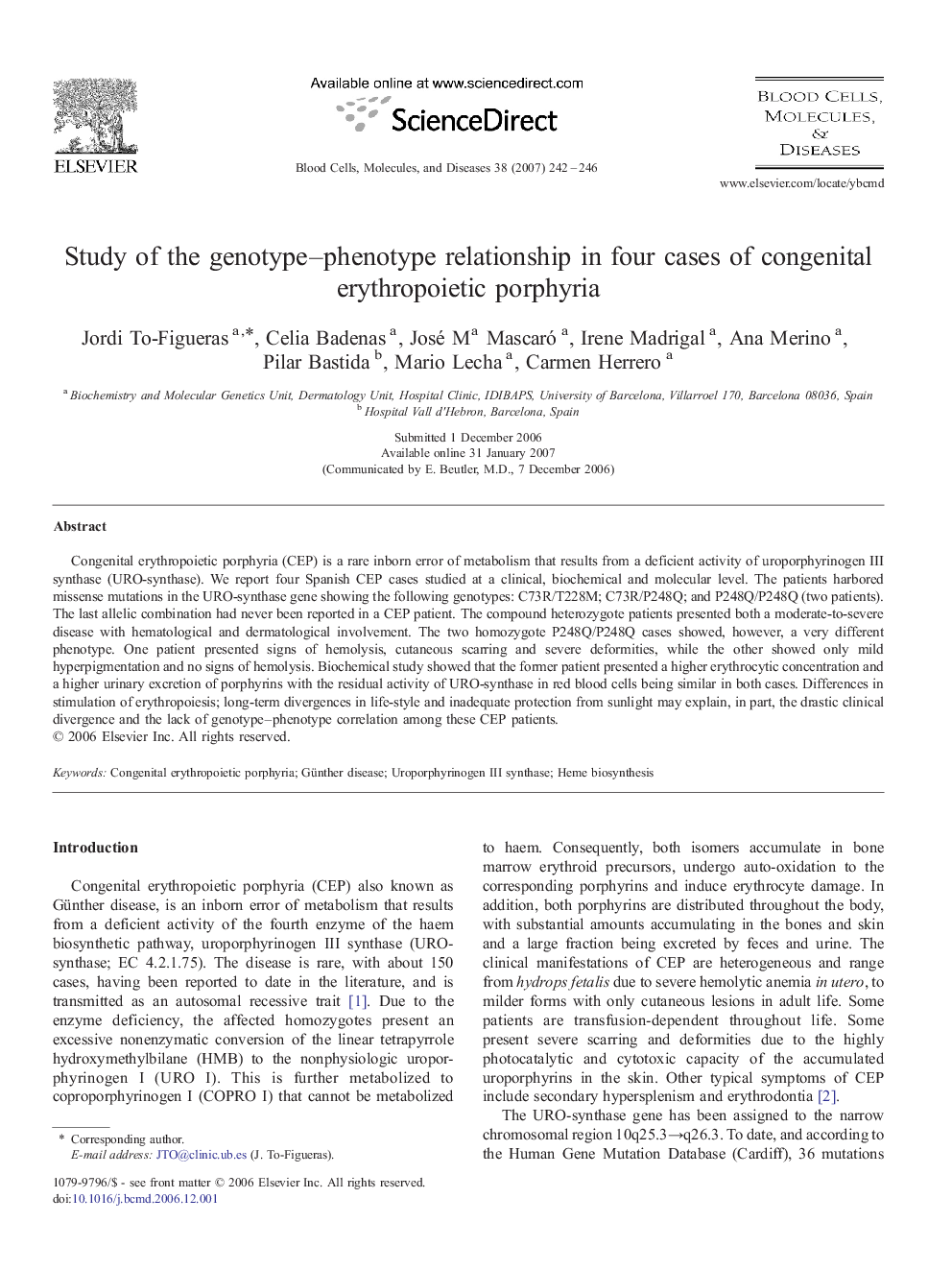| Article ID | Journal | Published Year | Pages | File Type |
|---|---|---|---|---|
| 2828260 | Blood Cells, Molecules, and Diseases | 2007 | 5 Pages |
Congenital erythropoietic porphyria (CEP) is a rare inborn error of metabolism that results from a deficient activity of uroporphyrinogen III synthase (URO-synthase). We report four Spanish CEP cases studied at a clinical, biochemical and molecular level. The patients harbored missense mutations in the URO-synthase gene showing the following genotypes: C73R/T228M; C73R/P248Q; and P248Q/P248Q (two patients). The last allelic combination had never been reported in a CEP patient. The compound heterozygote patients presented both a moderate-to-severe disease with hematological and dermatological involvement. The two homozygote P248Q/P248Q cases showed, however, a very different phenotype. One patient presented signs of hemolysis, cutaneous scarring and severe deformities, while the other showed only mild hyperpigmentation and no signs of hemolysis. Biochemical study showed that the former patient presented a higher erythrocytic concentration and a higher urinary excretion of porphyrins with the residual activity of URO-synthase in red blood cells being similar in both cases. Differences in stimulation of erythropoiesis; long-term divergences in life-style and inadequate protection from sunlight may explain, in part, the drastic clinical divergence and the lack of genotype–phenotype correlation among these CEP patients.
